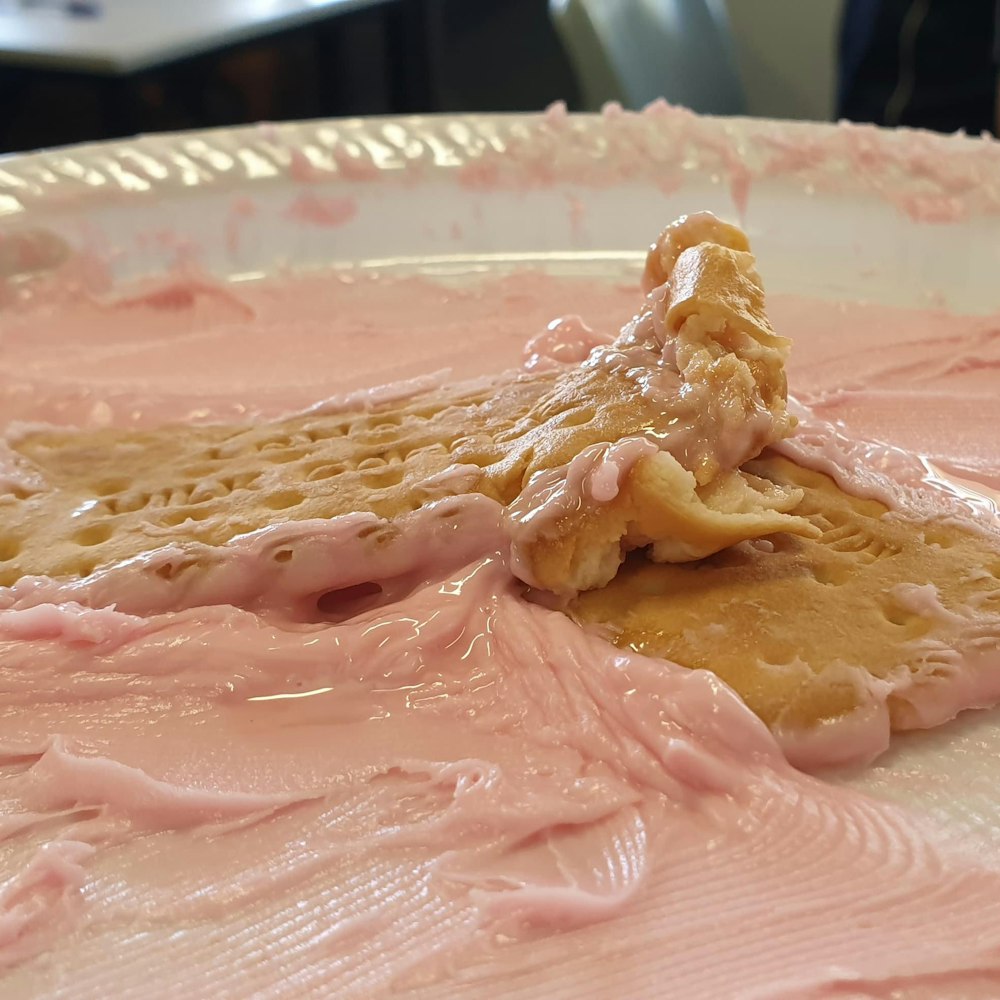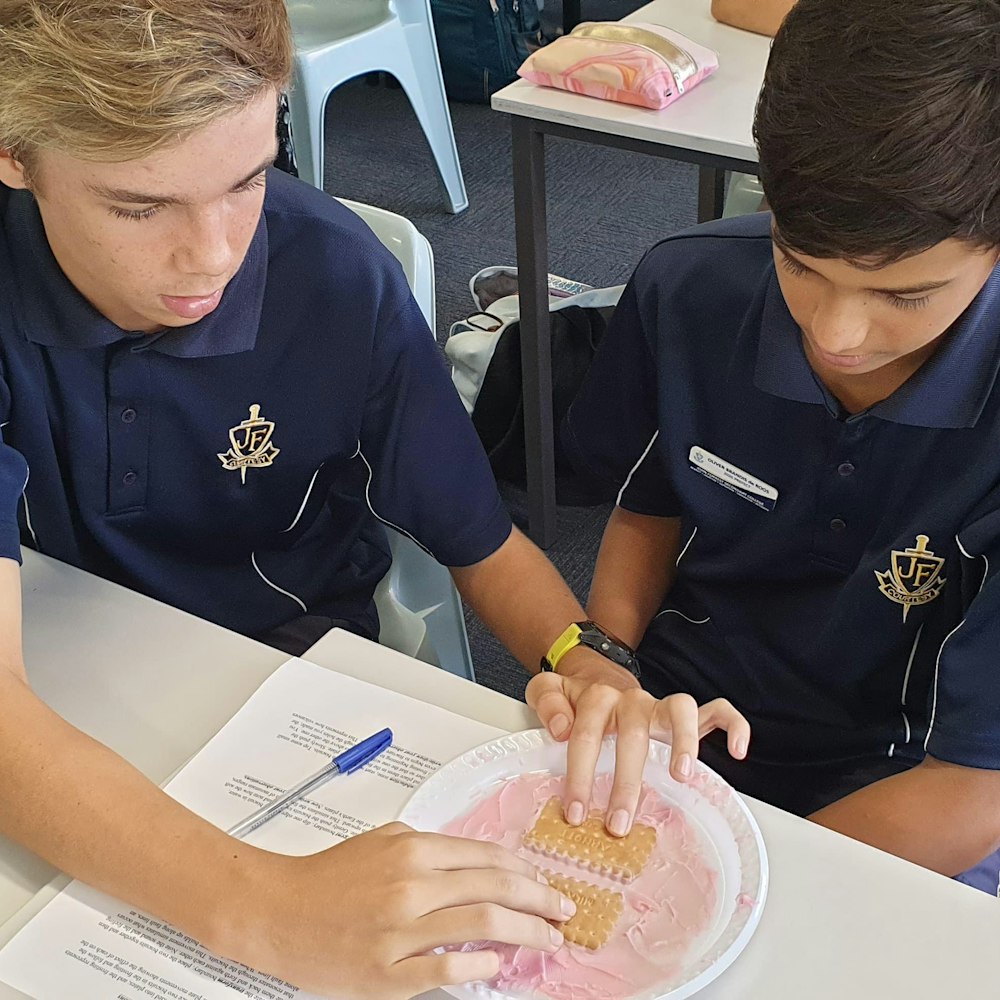Tectonic plates add tasty dimension to learning
In Week 6, Year 8 students from Ms Rowe's HASS class took a tasty approach to learning about the different types of plate tectonic action. Using icing as the mantel and milk coffee biscuits as the plates, students were able to simulate transforming, divergent, convergent and subducting types of movement. Students found this an engaging, interactive and helpful way to learn about the topic.
In my opinion the use of the biscuits and icing helped to put it in real perspective instead of just seeing still images and helped to remind us of what the definitions were for each type of movement as we can just think back to the fun activity we did. Also it being a fun activity instead of making mistakes and getting frustrated made me want to try again because I was enjoying the time I spent doing the work. – George Poh
This lesson definitely was engaging and fun: it provided more of an insight into the directions of the plate movements and the landforms created while also being interactive and delicious! – Lanah Santos
In this task, we got to try a more kinaesthetic way of learning and it was very fun, it was good to see the tectonic plates moving and their effects, this helped me visualize what happens and how much damage they can do while having some fun along the way! Overall this was an engaging and hands-on task that made us see the tectonic plates and their movements from inside our classroom. – Meg Ireland
In class we did some lessons on earthquakes regarding the type of earthquakes, the damage they can cause and how the earthquake occurs. In this class we did an experiment with two biscuits, frosting and a plate. My peers and I all followed the instructions to create our own part of the earth and created four different types of earthquakes causing different natural disasters.
The first one we did was a transform boundary earthquake; this occurs when to tectonic plates rub against each other disturbing the earth's mantle. The next delicious disaster was a divergent boundary; this is caused when two plates travel away from each other than the mantle seeps through the gap. This presented when underwater lava flows and creates islands. The convergent boundary was next
A convergent boundary is caused when two soft plates collide and crumble which causes mountain ranges in real life. The last earthquake our class re-enacted was the subduction boundary, this causes when two plates collide, and one proceeds under the other. Volcanoes are caused by this type of earthquake.
Thank you to our teacher for the interactive lesson. This made a lot of us retain the information and now we also have a diagram in our memory to add. Thank you also for the delicious experiment – Elexis Webb





